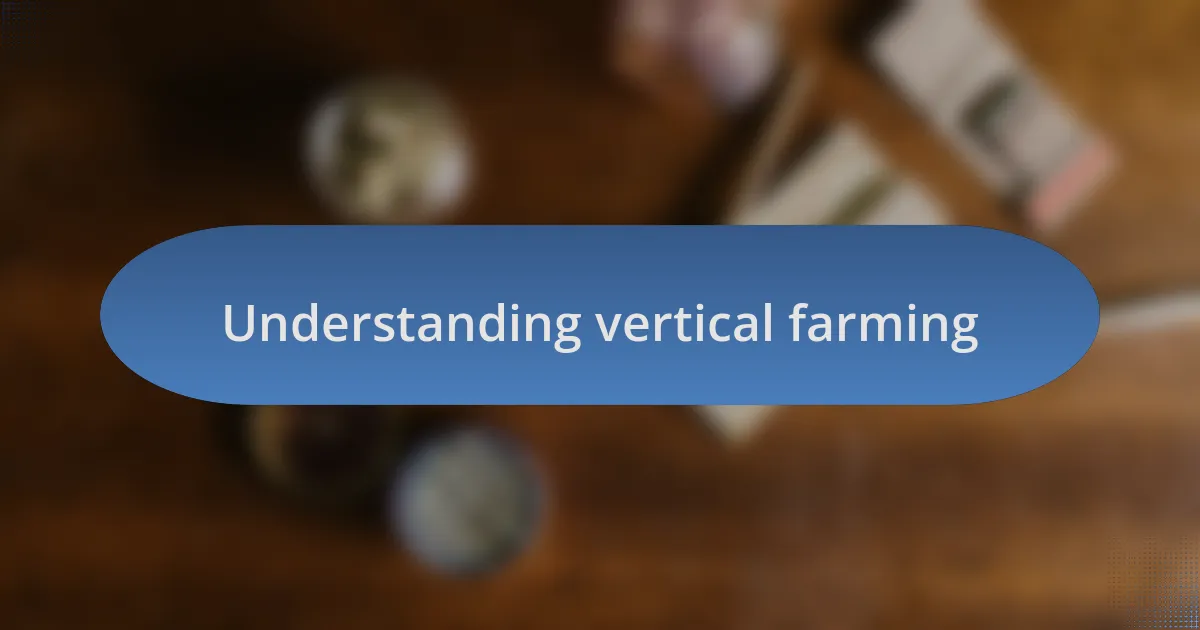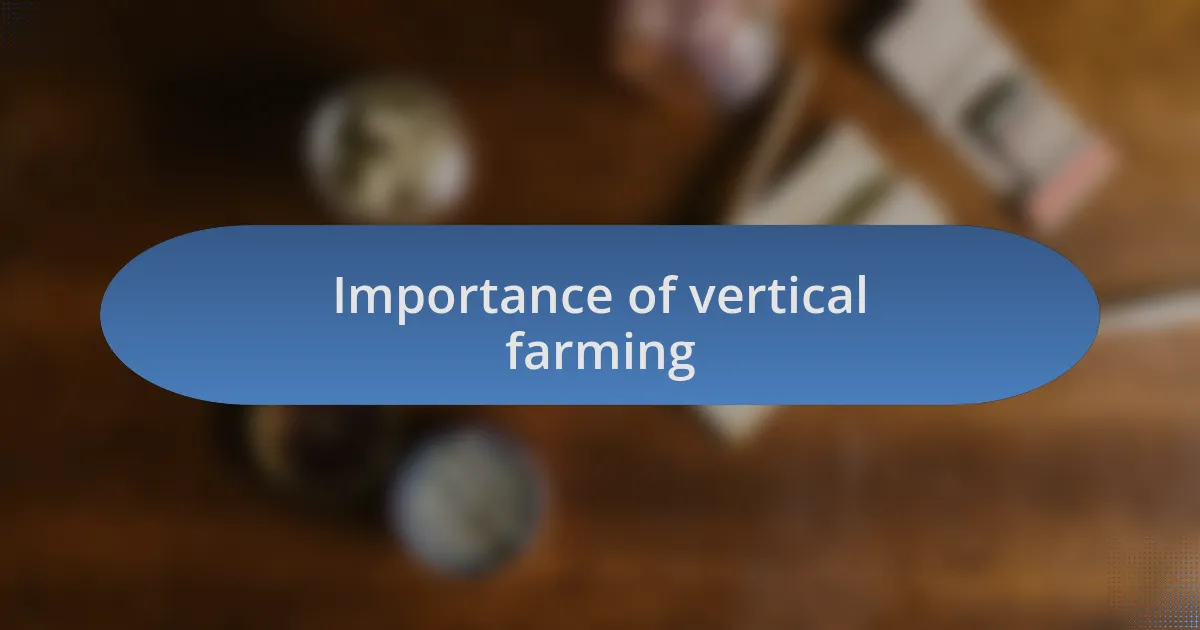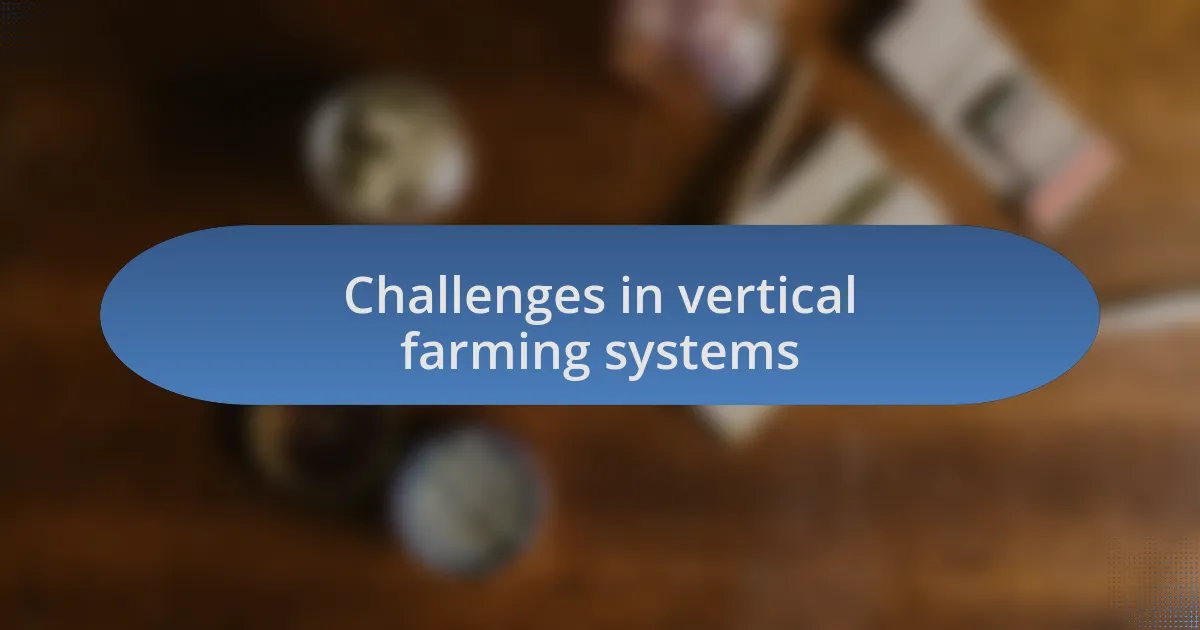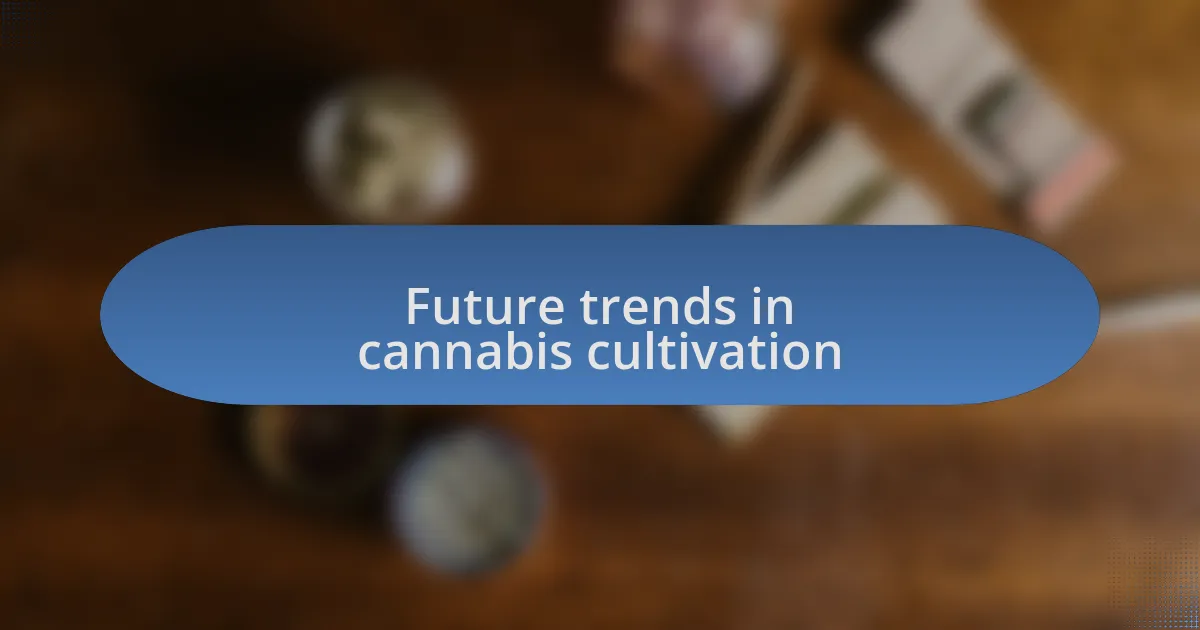Key takeaways:
- Vertical farming maximizes space and resources, offering sustainable solutions for urban food production and reducing water consumption and transportation emissions.
- This method addresses food insecurity in urban areas and enhances food safety by minimizing contamination risks inherent in traditional farming.
- Challenges include high initial investment costs, workforce training needs for advanced technology, and maintaining nutrient balance and pH levels.
- The future of cannabis cultivation will likely involve automation, AI integration, and greater emphasis on sustainability and consumer education.

Understanding vertical farming
Vertical farming is an innovative agricultural method that maximizes space and resources by growing crops in stacked layers or on vertically inclined surfaces. I remember visiting a local vertical farm and feeling amazed at how technology intertwined with nature, creating a lush environment in what seemed like an industrial space. Have you ever considered how this method could revolutionize our food systems?
In this setup, controlled environments allow for precise management of light, temperature, and nutrients, which can lead to faster growth cycles and higher yields. I recall the first time I witnessed lettuce growing under LED lights; it felt almost surreal to think that this could happen year-round without reliance on seasons or even soil. Doesn’t that present a fascinating solution for urban areas where space is limited?
What truly struck me was the sustainability aspect. Vertical farming reduces water consumption significantly and minimizes transportation emissions since produce can be grown right where it’s consumed. I often wonder how these practices can be integrated into cannabis cultivation, providing a more eco-friendly approach in an industry that is rapidly evolving and expanding.

Importance of vertical farming
The importance of vertical farming cannot be overstated. It plays a crucial role in addressing food insecurity, particularly in urban settings where traditional farming is impractical. I remember visiting a rooftop farm in a bustling city; it was astounding to see fresh produce thriving just feet away from concrete and noise. Have you ever thought about how this setup could bring fresh food closer to communities that need it the most?
Moreover, vertical farming enhances food safety by reducing the risk of contamination that often plagues conventional farming methods. I once spoke with a vertical farmer who mentioned how sterile environments can lead to cleaner crops, minimizing pesticide use. Doesn’t it make you think about the quality of the food we consume everyday?
This method affirms sustainability by drastically cutting down on land use and carbon footprints. During a recent workshop, I learned how vertical farms can produce up to 10 times more yield per square foot than traditional farms. Isn’t it exciting to imagine a future where farming doesn’t come at the expense of our planet?

Challenges in vertical farming systems
When I delved into vertical farming, I quickly recognized a significant hurdle: the high initial investment. Setting up a vertical farm often means outfitting an entire facility with cutting-edge technology, from LED lighting to climate control systems. It made me wonder—how many aspiring farmers could pivot into this innovative field if the financial barrier weren’t so steep?
Another challenge I encountered is the workforce training required for optimal operation. Unlike traditional farming, vertical farms involve advanced techniques and equipment. This reality sparked a memory of my first experience with hydroponics; I felt overwhelmed by the learning curve. It’s crucial to consider: how can we ensure that individuals have access to the education needed to thrive in such environments?
Lastly, I noticed that maintaining the right balance of nutrients and pH levels in a vertical farm can be a tricky endeavor. I’ve seen firsthand how minor changes can affect plant health dramatically. It posed an interesting question for me: how do farmers navigate these variables while still delivering yield consistency and quality? These issues highlight the need for robust monitoring systems to keep plants healthy and productive.

Future trends in cannabis cultivation
The future of cannabis cultivation is likely to see a significant shift towards automation and AI integration. I’ve watched technology evolve rapidly, and it’s incredible how machine learning can optimize growth conditions tailored to cannabis strains. Could you imagine a system that adjusts nutrient delivery or lighting based on real-time plant responses? It really makes me excited about what’s to come.
Additionally, sustainability trends will undoubtedly shape these practices. I recall attending a seminar where experts discussed using organic waste for nutrient recycling—what an inspiring concept! Emphasizing eco-friendly practices not only appeals to consumers but also fosters a healthier planet. Have you considered how blending traditional farming methods with cutting-edge technology could drive this movement forward?
Lastly, I believe that consumer education will play a vital role in the future of cannabis cultivation. From my experience attending expos, I’ve seen how knowledgeable consumers can influence market trends. As awareness grows about the differences in cultivation practices, will we see a shift towards more organic, responsibly-grown cannabis? Engaging with the community will be key to fostering a deeper understanding and appreciation of these advanced techniques.